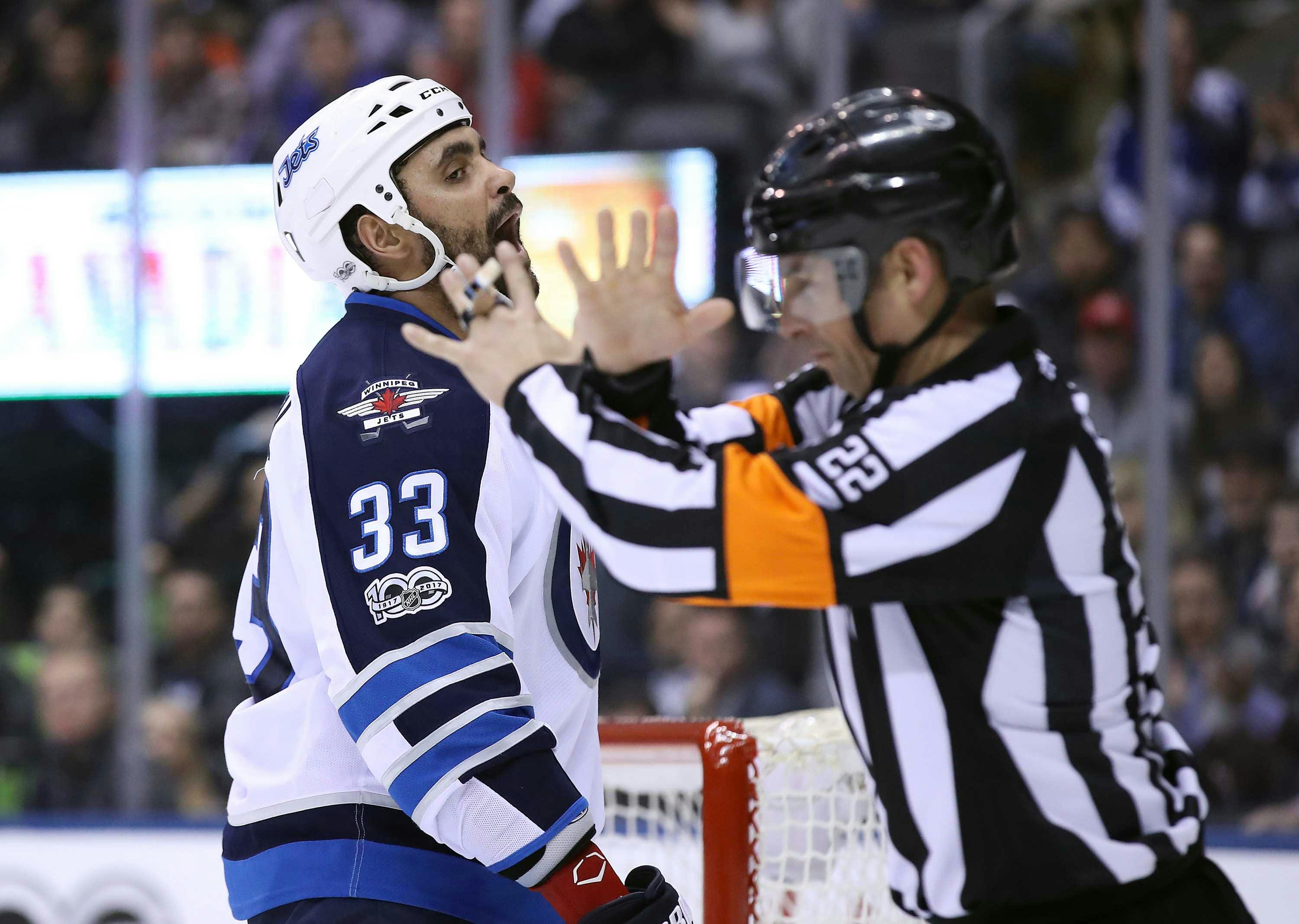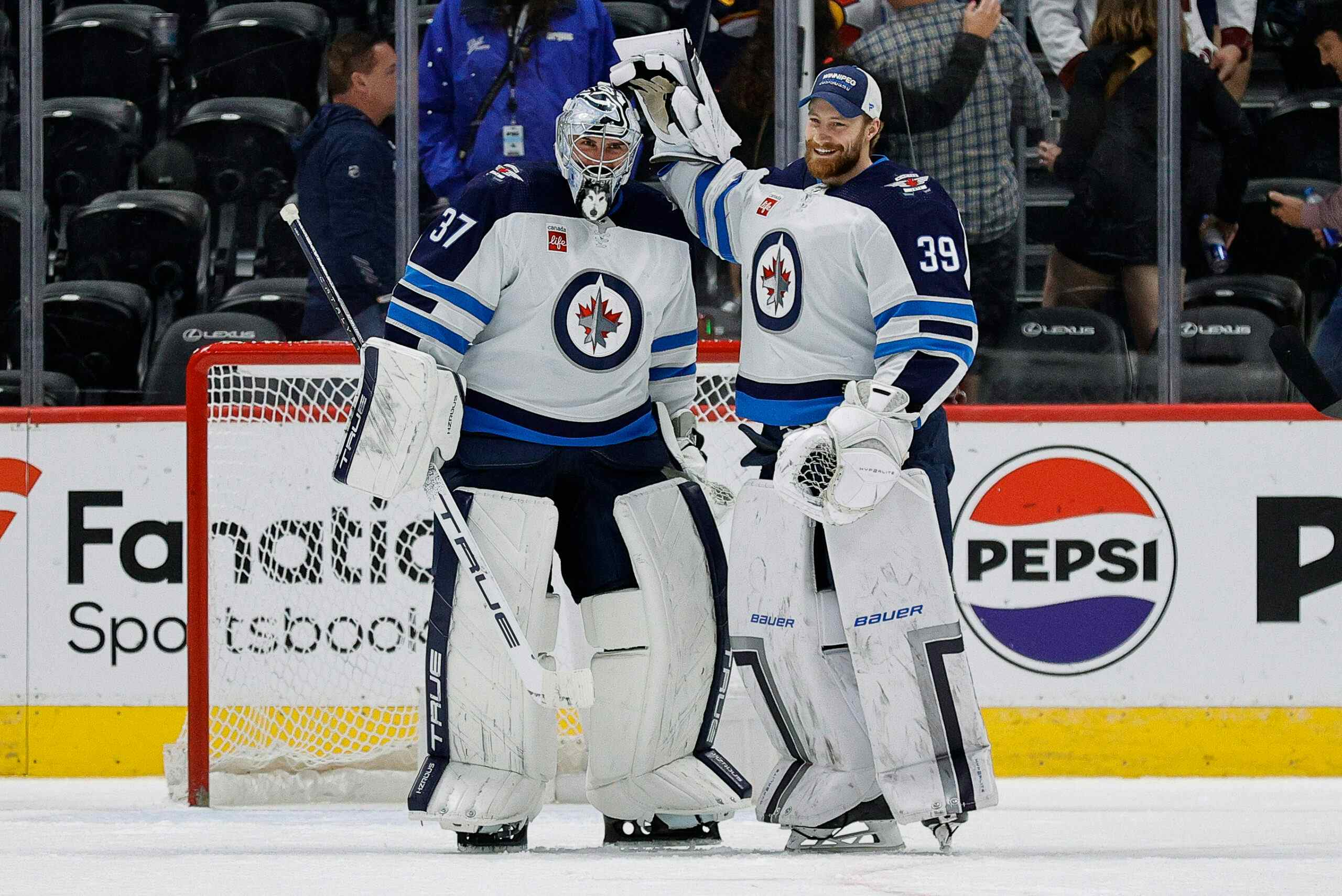Byfuglien’s Concussion Exposes Flawed NHL System

Upon hearing the news that Dustin Byfuglien is out at least a week, (it’s likely two to three weeks since it was announced by Paul Maurice that he wouldn’t be skating for at least a week) I went on the Twitter machine and declared the entire NHL concussion protocol – the very one that had Byfuglien removed from the game against Pittsburgh after a rather inauspicious hit on Jamie Oleksiak to be examined for a possible concussion, only to be “cleared” minutes later – was broken.
Much like the entire process that saw Dustin Byfuglien seemingly re-diagnosed, I would like to amend my own statement.
The NHL Concussion protocol isn’t broken, but I don’t believe what they currently have is working either and it mostly has to do what how they follow up their initial reactions.
It’s Better Than It Used To Be
15 years ago, heck maybe even less than that, the general reaction to seeing a player like Byfuglien down on the ice and trying to get up back on to his feet with a brutal case of “Bambi-legs” would be dismissed as just “having his bell rung.” He would perhaps sit on the bench while a trainer would hover over him rubbing his neck and asking some random questions. So long as answers to questions like “where are you right now?” wasn’t “fried eggs and bacon” he’d be allowed back on the ice having missed maybe one entire shift.
Now, at typically the first sight of distress, a player is pulled from the ice and examined in a “quiet room”, sometimes against their own will. You saw it with Dustin on Tuesday night and Maurice on Thursday night alluded to it (the cameras also did catch) as Byfuglien seemed to shrug helplessly and verbalized that he was fine as was being escorted away. Minutes later, the medical expert must have agreed with the player as Buff was back on the bench and taking his next turn on the ice.
At the very least, players aren’t allowed to just shake these things off and stay in the game as we would have seen a decade ago. They get pulled aside, looked at, and… Well that’s kind of it really. An almost snap judgment is made about something that isn’t tangently seen by the human eye and that science has proven may not reveal itself until hours or days after the incident occurs.
Hockey Culture Still Rules Over Safety
Dustin Byfuglien may have been able to answer all his baseline questions correctly. His eyes probably followed the tip of a slow moving pen or finger back and forth to prove that he was able to focus on an object. None of these simulate the sensory overload that is sharing a sheet of ice with 11 other players and four officials while the noise of 15,000 plus can come at you from all angles… But somehow it’s good enough.
While we just acknowledged things have gotten better, “better” is a very relative term in this case and really only applies to people being able to recognize when something serious may have happened. In the end it’s still hockey and there is still a “suck it up and play hurt” mentality. Lip service has been paid towards the idea of protecting players and their brains, but hockey still manages to lapse back into the “get them back out there now” mentality when all is said and done.
Witness the aftermath of what happened two seasons ago when spotters requested that Oilers forward Conor McDavid be pulled from the ice to be examined after a collision with the boards during the second period of a game against the Minnesota Wild. McDavid, who insisted he was fine and that the motion he made towards his head was to check his mouth which had hit the ice (at last check, the mouth was still part of the head region, but that’s neither here nor there I guess) as he slowly picked himself up off the ice had nothing to do with him feeling concussed or even woozy. It was Connor’s instance that he was fine that led fans and media to be quietly outraged that anyone dared to be concerned for the health and safety of the world’s best player.
“I hit my mouth, reached up grabbed my mouth and they took that as something that it wasn’t,” McDavid stated to reporters after the game. “Obviously the spotter thought he knew how I was feeling. So he pulled me off. Shitty time in the game, too, a partial five-on-three. If we capitalize it can change the game.”
And while it was Connor McDavid’s words that night, they are likely the same words echoed virtually very time by a player removed from the game when they state they feel fine. Dustin Byfuglien likely was no different on Tuesday night as the Jets and Penguins were in a tight game in the first period and missing their best defenseman who said he felt ok would have been a critical blow to the Jets chances.
McDavid that night punctuated his disdain for the concussion spotter with a flippant conclusion, “I went out for the third period so I think that says it all right there. If there was any chance for a concussion they wouldn’t have let me go back out.”
“They” let Dustin Byfuglien back out on Tuesday night, and days later he was diagnosed with a concussion, so maybe it stands to reason that “they” don’t fully know what they are dealing with when it comes to head injuries and that hockey still hasn’t addressed head injuries in a completely serious manner, opting to side with getting a player back on the ice as soon as possible and brush off concerns about future injury.
The Answer Is Complicated, Or Is It?
If players, media and fans balk at the idea of missing a portion of a period in an effort to err on the side of caution, what hope is there to change anything any time soon?
Dustin Byfuglien didn’t need to go back on the ice at all Tuesday night, but he did most likely because he said he was fine and because a physician examining him couldn’t spot any immediate symptoms of possible brain injury (again, the immediate result from the hit somehow ignored because that apparently didn’t count) and those factors combined with the prevailing thought that hockey players have go out and perform at pretty much any cost.
Players could be told to sit for the rest of the game or even told to sit for the next week to see if any symptoms do develop. If they don’t, then no harm done but there of course would be resentment from multiple sides over said keeping the player off the ice for what would seemingly be nothing.
And so it goes, hockey has gotten better at understanding concussions, better at understanding the severity and being able recognize them. If the NHL’s protocols were “broken” then these basic things would be beyond their grasp, so in this the NHL has improved.
It’s what all sides involved do to follow through on these protocols that has to be questioned, because a player that skated off the ice like Dustin Byfuglien did after that initial hit was allowed to return to the ice minutes later only to be diagnosed with a concussion two days later suggests that he played the rest of that game under greater risk than needed and that the whole process the NHL has is still very much flawed.
Recent articles from Art Middleton





